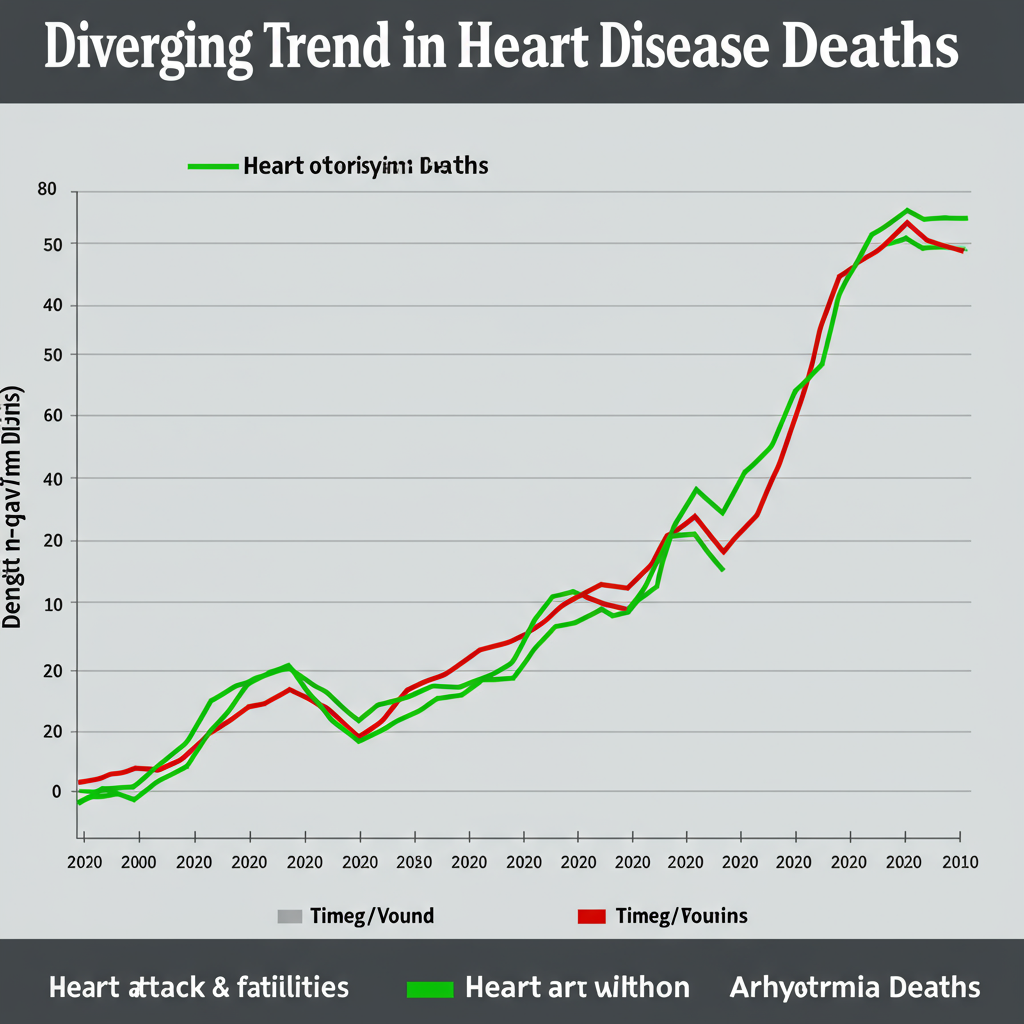While heart disease has held the unfortunate title of the leading cause of death in the U.S. for over a century, the landscape of how Americans are succumbing to cardiac conditions is undergoing a significant transformation. Recent research reveals a striking paradox: deaths from heart attacks have seen a dramatic decline, but fatalities from other serious conditions like heart failure and arrhythmias are on the rise.
According to a comprehensive analysis of over 50 years of U.S. data, overall age-adjusted heart disease death rates have fallen substantially, dropping by 66% between 1970 and 2022. The most remarkable success story is the nearly 90% plunge in deaths specifically attributed to heart attacks during the same period. In 1970, heart attacks accounted for more than half of all heart disease deaths (54%), a figure that shrank to less than one-third (29%) by 2022.
Why the Dramatic Drop in Heart Attack Deaths?
This remarkable progress is largely the result of decades of relentless medical innovation and successful public health campaigns. Key advancements include:
Improved emergency response and systems of care, including the widespread adoption of bystander CPR and AED use.
Breakthrough surgical techniques like coronary artery bypass grafting and balloon angioplasty/stenting.
Revolutionary diagnostic tools like coronary angiography and advanced imaging.
Development and widespread use of life-saving medications such as thrombolytics, aspirin, beta blockers, statins, and newer agents.
Public health initiatives promoting healthier lifestyles, tackling smoking rates, and providing guidelines for managing blood pressure and cholesterol.
Research from institutions like Imperial College London highlights specific successes, such as major trials (like ASCOT and HYVET) that shaped guidelines on managing hypertension and cholesterol, leading to more effective preventive strategies and better outcomes following acute events. Techniques allowing for faster assessment of artery blockages (like iFR) and more precise treatment of arrhythmias (like Ripple Mapping) have also played a crucial role in improving care and survival rates.
The Growing Threat: Heart Failure and Arrhythmias
Despite the wins against heart attacks, the battle is far from over. The same research shows that while heart attack deaths fell, the age-adjusted death rate from all other types of heart disease combined – including heart failure, hypertensive heart disease, and arrhythmias – significantly increased by 81% between 1970 and 2022. These conditions now represent a larger proportion of heart disease deaths than heart attacks.
Specific conditions seeing significant increases in death rates include:
Arrhythmias (irregular heartbeats): Saw the largest relative increase in death rates, rising by a staggering 450%.
Heart Failure: Death rates increased by 146%.
Hypertensive Heart Disease: Deaths linked to high blood pressure complications rose by 106%.
Data from the UK mirrors this trend, showing that while incidence of heart attacks and strokes has fallen, diagnoses of other conditions like arrhythmias, valve problems, and blood clots are on the rise, keeping the overall burden of cardiovascular disease relatively stable in recent years.
Why Are Deaths from Chronic Conditions Increasing?
The rise in deaths from heart failure and related conditions is closely linked to the increasing prevalence of key cardiovascular risk factors in the population. Over the past few decades, the U.S. has seen substantial increases in:
Obesity: Prevalence has more than doubled, from 15% in the 1970s to 40% in 2022.
Type 2 Diabetes/Prediabetes: Now affects nearly half of U.S. adults.
Hypertension (High Blood Pressure): Affects nearly 50% of adults.
These chronic conditions put immense strain on the heart over time, leading to the development of heart failure and electrical abnormalities. Furthermore, the U.S. population is aging, and as people live longer, they are more likely to develop these complex, chronic cardiac issues.
Managing heart failure and complex arrhythmias presents different challenges than treating acute heart attacks, which often stem from a blockage. Heart failure, for instance, is a multifaceted syndrome involving the weakening or stiffening of the heart muscle through complex cellular processes and interactions, making it difficult to reverse once established.
Looking Ahead: A Challenging Future
Experts warn that this shift towards more chronic and complex heart conditions, coupled with rising risk factors, paints a challenging picture for the future. Projections suggest that by 2050, a staggering 61% of U.S. adults could have some form of cardiovascular disease, impacting over 184 million people.
This surge will not only affect individual health but also place an immense burden on the healthcare system, with the total cost of cardiovascular disease projected to hit $1.8 trillion annually by 2050. Disparities also persist, with evidence showing improvements in heart health are not always shared equally across different age groups or socioeconomic statuses.
The New Frontier: Prevention and Chronic Care
The focus of cardiovascular health is shifting from primarily preventing acute events to managing chronic conditions and helping people age with healthier hearts. Strategies emphasized by health organizations include:
Promoting heart-healthy lifestyles (nutrition, exercise, not smoking, sleep) through frameworks like Life’s Essential 8.
Improving the prevention and management of key risk factors like high blood pressure, diabetes, and obesity.
Investing in research for better treatments and potential cures for complex conditions like heart failure.
- Ensuring equitable access to quality healthcare and preventive resources, particularly in underserved communities.
- newsroom.heart.org
- www.ox.ac.uk
- nypost.com
- www.nature.com
- www.imperial.ac.uk
While remarkable progress has been made in reducing heart attack deaths, the increasing prevalence of heart failure, arrhythmias, and other chronic conditions, fueled by rising risk factors and an aging population, represents the new frontier in the ongoing fight against heart disease. Addressing these evolving challenges requires a renewed focus on prevention, chronic disease management, and health equity.




